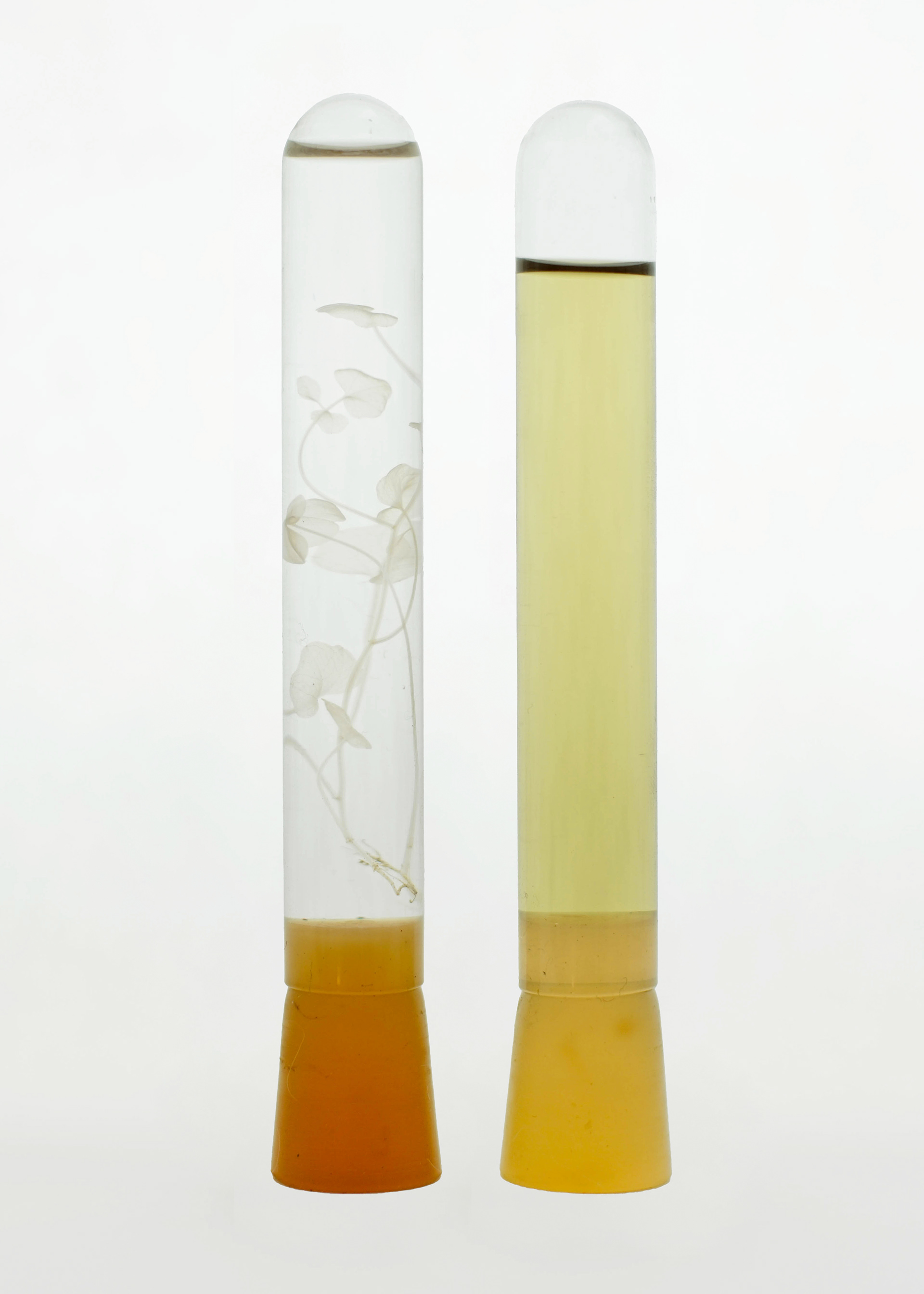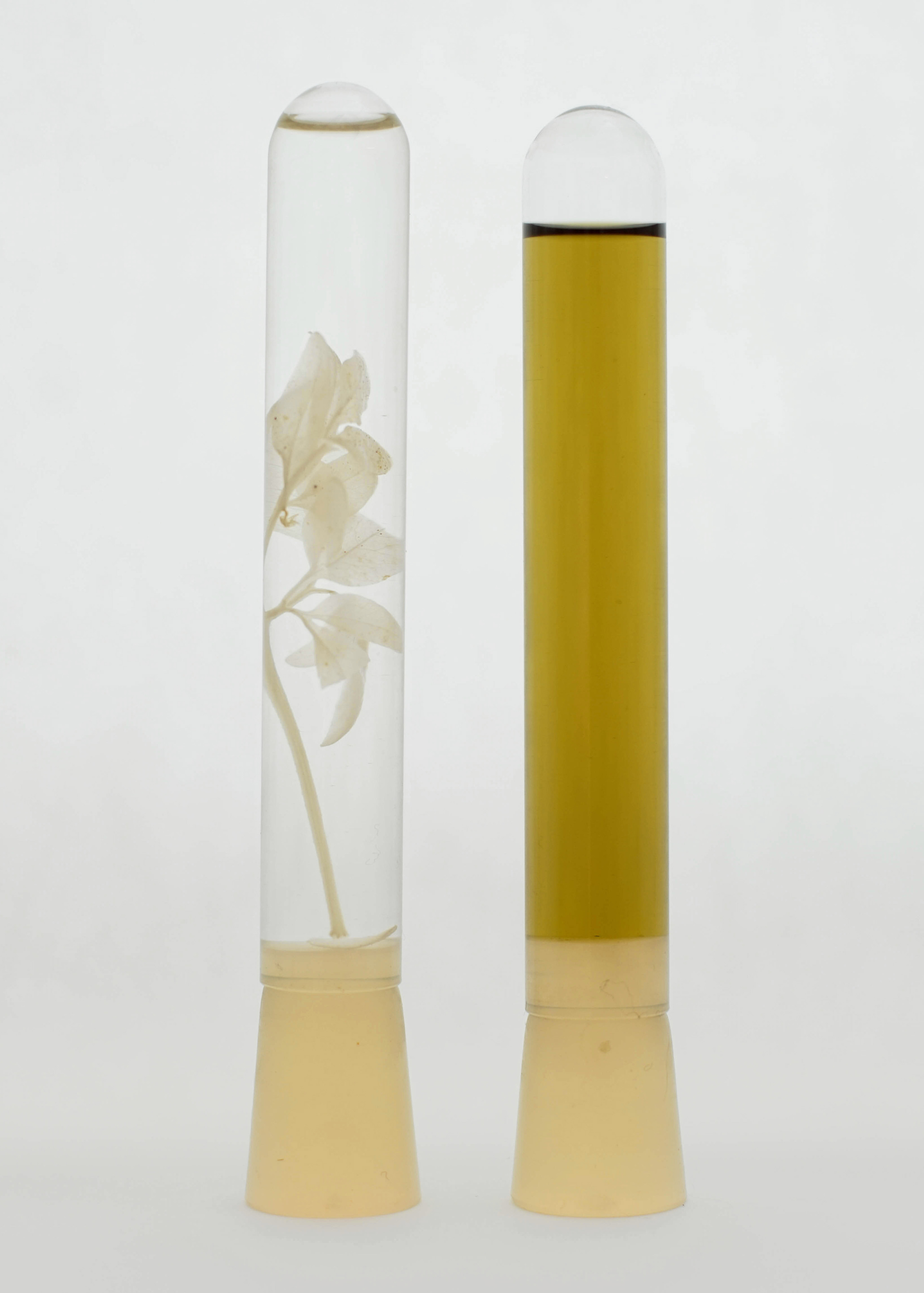In Forest, the reductionist imaginary about nature is portrayed, connecting modern science to the landscape representation of European naturalism, in the colonial period.
Pigments are extracted from eight plants, making them transparent and producing an isolation between the color and the leaf. From the extracted tones, the idyllic print “Floresta Virgem” by the naturalist Johann Moritz Rugendas was digitally dyed. Reductionism, typically scientific, and the imposition of an external sense, typically colonial, are reproduced in the two stages of the work.
Pigments are extracted from eight plants, making them transparent and producing an isolation between the color and the leaf. From the extracted tones, the idyllic print “Floresta Virgem” by the naturalist Johann Moritz Rugendas was digitally dyed. Reductionism, typically scientific, and the imposition of an external sense, typically colonial, are reproduced in the two stages of the work.
Etymologically, the word “forest” originates from "foresta", meaning “outer forest”—a term rooted in medieval European interactions with wooded landscapes. This notion of exteriority echoes the historical construction of the modern Brazilian imagination of forests: as something outside society, in contrast to the integrated relationships of the pre-colonial period.


